http://www.silvermakersmarks.co.uk/Make ... HZ.html#HW
The firm was established in Birmingham c. 1850 by George Cartwright and Joseph Hirons, trading as Cartwright & Hirons.
In 1853, when Horace Woodward entered in the partnership, the firm changed to Chartwright, Hirons & Woodward.
The firm was active as electroplate manufacturers and silversmiths at 138/139 Great Charles Street, Birmingham, with London showrooms at 41 Hatton Garden.
In 1859 Joseph Hirons left the partnership and the firm changed its name to Cartwright & Woodward.
In 1865, after George Cartwright's retirement, the business was continued by Horace Woodward under the name Horace Woodward & Co. In 1883 Horace Woodward left the company and the business was continued by Edgar Finley and Hugh Taylor, maintaining the same name until 1893 when the firm was converted into a limited liability company as Horace Woodward & Co Ltd.
In the same year the production was transferred to Atlas Works, Paradise Street, Birmingham and additional premised were opened in 1903 at Vyse Street, Birmingham.
In 1919 the firm was acquired by Adie Brothers Ltd.
The firm participated with success to London (1851 and 1862), Paris (1867) and Melbourne (1881) Exhibitions.
The firm used a figural trade mark (the shape of Atlas into a lozenge) registered in 1876. This trade mark was often used in its electroplate production. The same trade mark was rarely present in its sterling silver production.
CHRONOLOGY:
Cartwright & Hirons c. 1850 - 1853
Chartwright, Hirons & Woodward 1853 - 1859
Cartwright & Woodward 1859 - 1865
Horace Woodward & Co 1865 - 1893
Horace Woodward & Co Ltd 1893 - 1919 (acquired by Adie Brothers Ltd)
http://www.silvercollection.it/ENGLAHORACEWOODWARD.html
Herewith a vesta sovereign case for half sovereigns, carries hallmarks for Birmingham 1905. The sovereign case measures 6.0 cm long, a button release, ridged case, and features a match strike and vesta case at one end. Free cartouche. Weight 37 grams or 1.3 oz .Birmingham, Horace Woodward & Co Ltd , this particular mark registered Dec 1893. Year letter f for 1905.
Vesta cases, vesta boxes, or pocket match safes or matchsafes were small portable boxes made in a great variety of forms with snapshut covers to contain vestas (short matches) and keep them dry. So called after the name of one of the early makers (which was taken from the goddess Vesta, a Roman deity of fire and the hearth), they came into use around the 1830s and were produced extensively between 1890 and 1920. During this period, almost everyone carried strike anywhere matches, so they could light stoves, lanterns and other devices. Early matches were unreliable and prone to ignite from rubbing on one another or spontaneously. Accordingly, most people carried a match safe to house their matches. Wealthy people had match safes made of gold or silver, while common folk had ones made of tin or brass.
A sovereign case is used for carrying either full or half gold sovereigns and would be often worn on a gentleman Albert chain and kept in a waist coat pocket. The coins would be stacked tightly together by a spring action mechanism, a case usually holds about 4 sovereigns in a compartment.
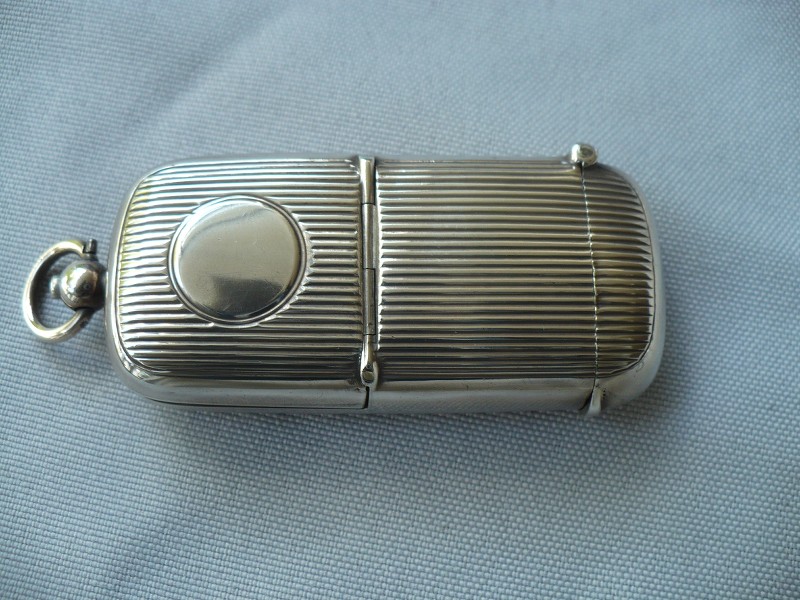
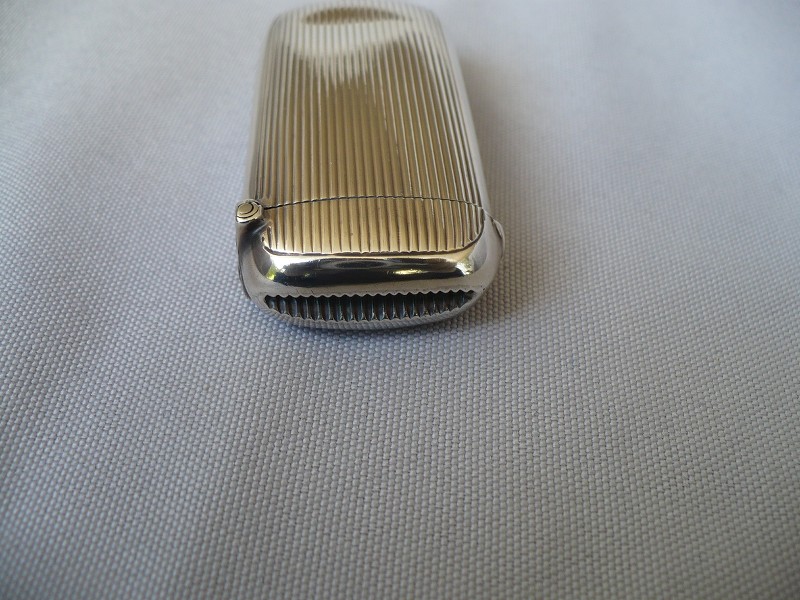
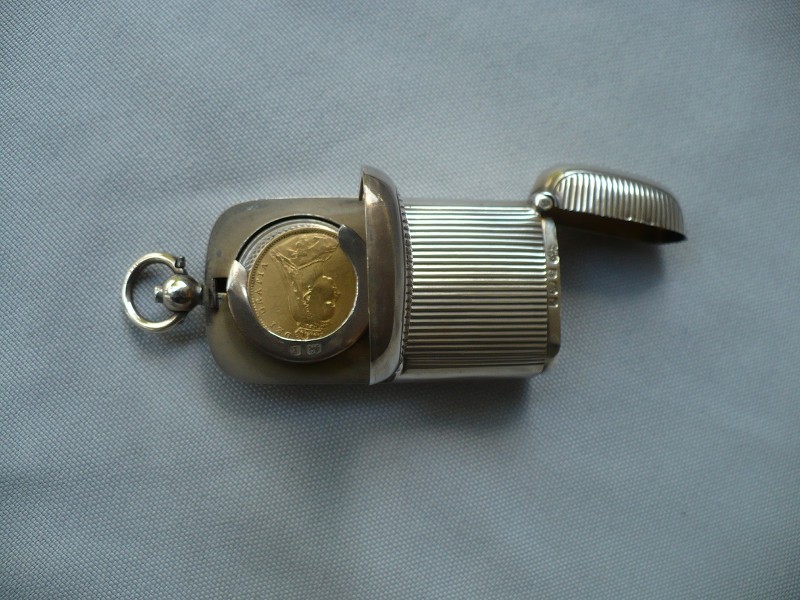
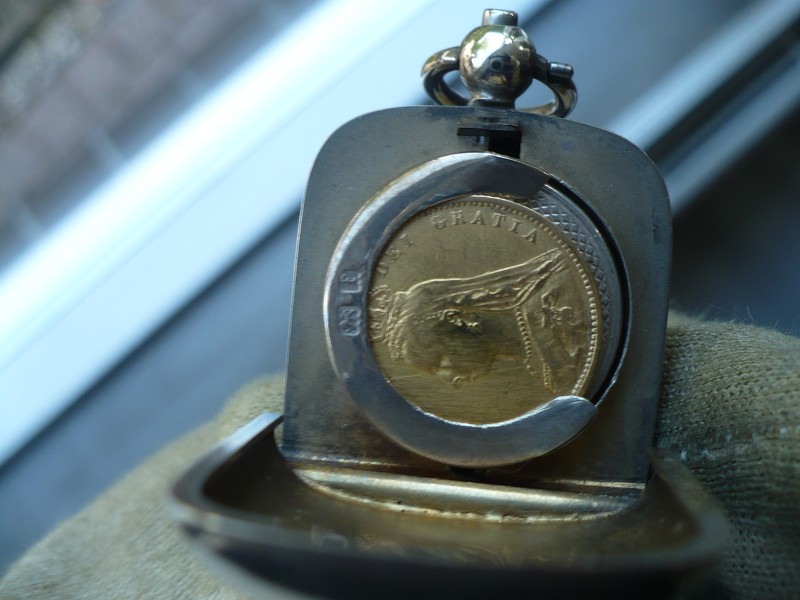
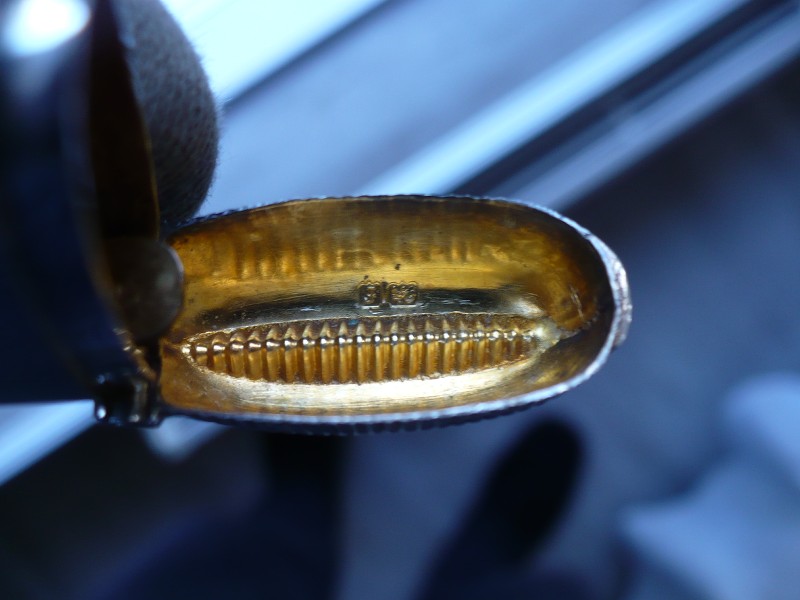
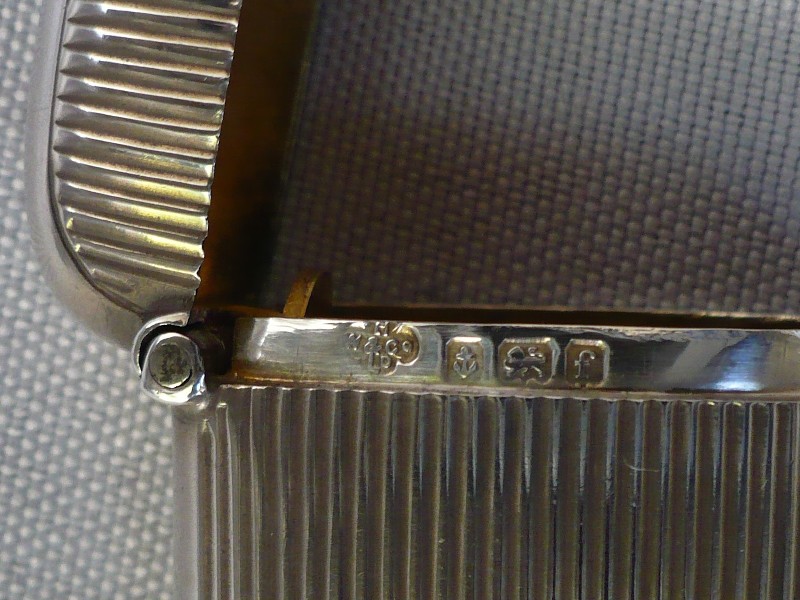
Peter








